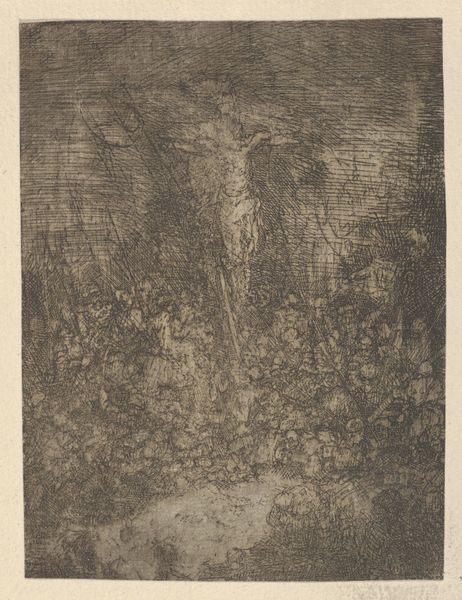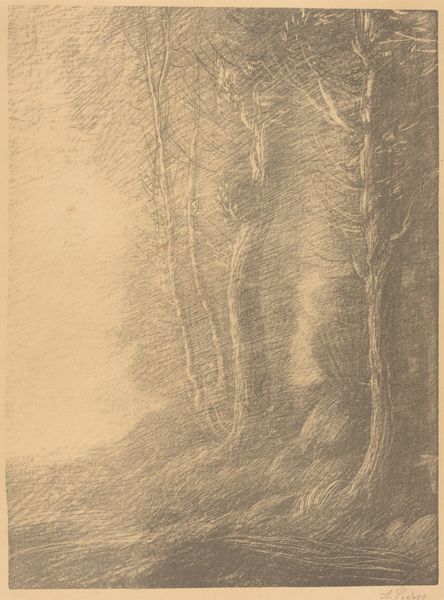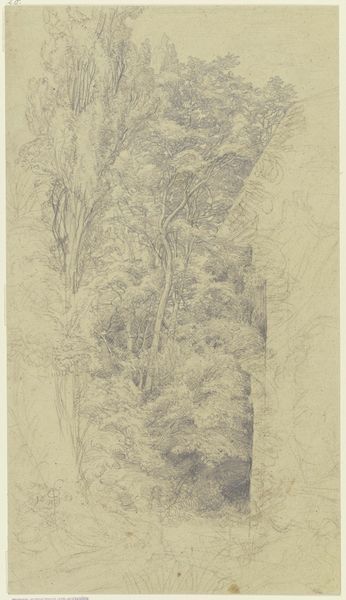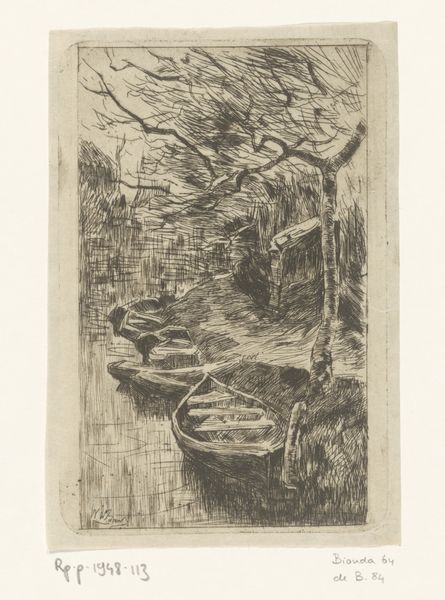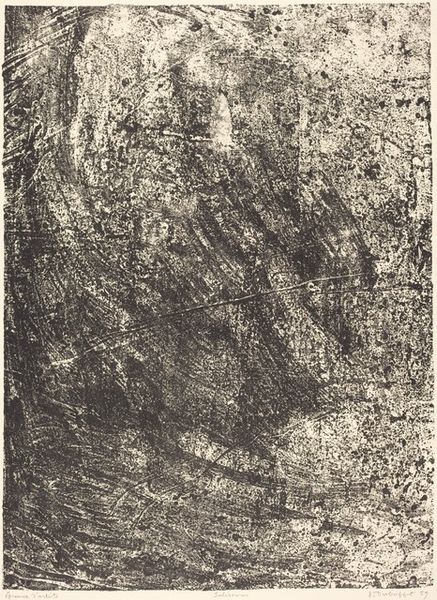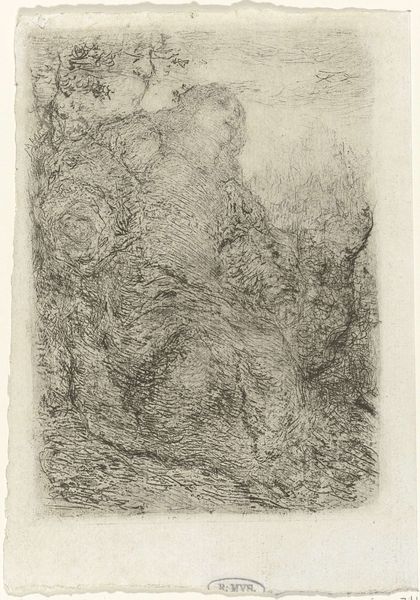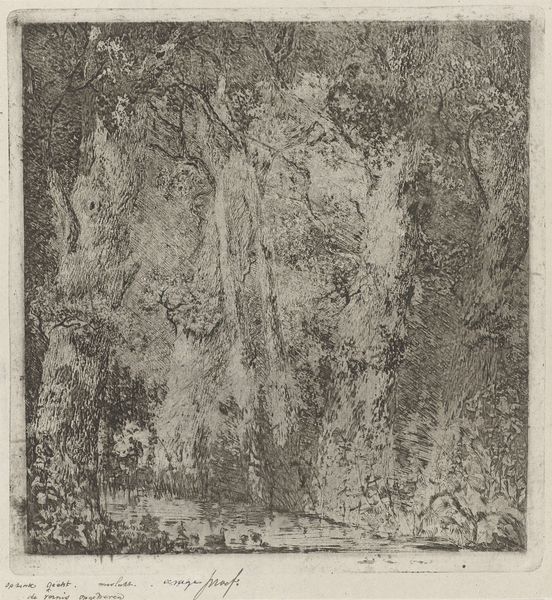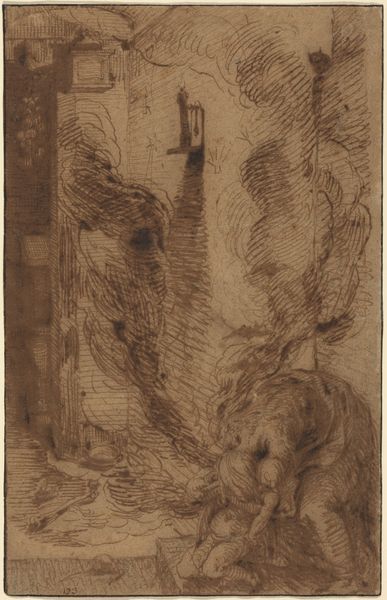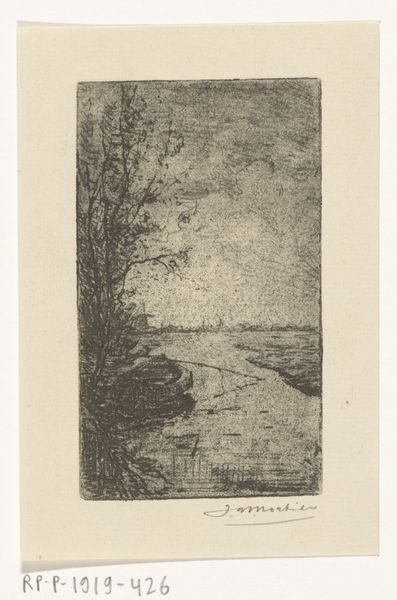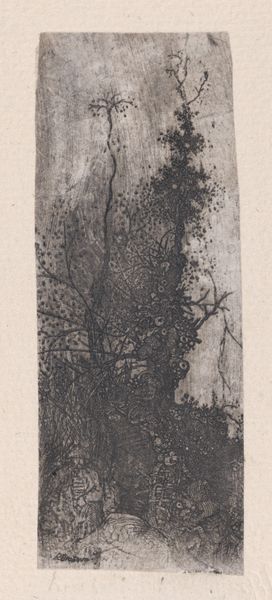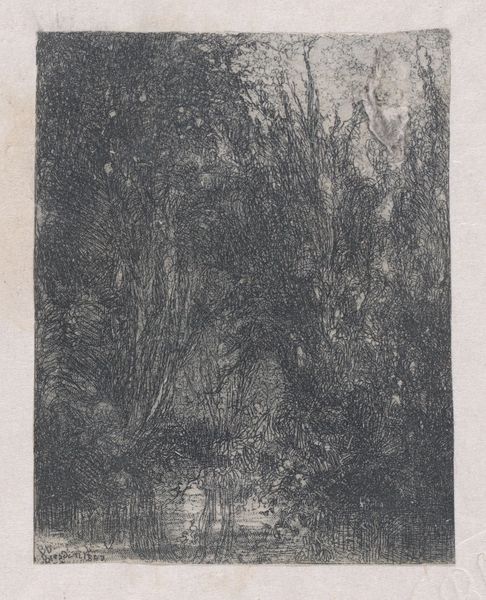
Woods in Winter Sun, 1st plate (Soleil d'hiver dans les bois)
0:00
0:00
print, etching
# print
#
etching
#
landscape
#
line
#
realism
Copyright: National Gallery of Art: CC0 1.0
Curator: Alphonse Legros created this etching, “Woods in Winter Sun,” sometime in the late 19th century. The print showcases his skill with the etching needle, creating a striking landscape. Editor: It's powerfully somber, isn't it? Almost oppressive. The density of those etched lines really convey a sense of being enclosed, even suffocated, by the woods in winter. The light breaking through offers the only sense of hope, or perhaps just relief from the darkness. Curator: It is remarkable how Legros utilizes line to generate atmosphere. If we analyze the technique itself, the etching method involves scratching into a metal plate which is then submerged in acid, eating away at those lines and resulting in a beautiful design through the careful implementation of a precise chemical process. Editor: Exactly, the strategic control and deployment of those "precise chemical processes," yields what is clearly meant to serve as some dark and dreary place within the human mind. The stark contrast between the shadowed thicket and the stark sun-spot presents a dynamic between oppressive forces and that of hopeful change. Where do you place this piece within broader 19th-century anxieties? Curator: Legros was part of a larger artistic trend of depicting rural scenes and reflecting on social and industrial change, and how it affected traditional lifestyles and their access to resources. Prints were especially powerful mediums to reach wider audiences across socioeconomic lines, who would not normally see a museum. It is through the distribution of this piece and others of a similar ilk, that an audience could be activated to stand against oppressive powers. Editor: Legros uses his artwork as a conduit to deliver powerful messaging about socio-economic issues while using nature itself to set the atmosphere of impending dread and possible future change. Considering contemporary conversations surrounding climate and environmental issues, Legros' commentary remains especially significant to the public role of art and contemporary identity, and a powerful warning of where inaction may lead. Curator: Absolutely. Legros was adept at crafting works relevant to his time, works which now enable audiences today to find relevant pathways of inquiry to contemporary conditions through the politics of his imagery. Editor: Thinking about the deep symbolism Legros’ use of winter sunlight offers us, especially considering the suffocating feeling induced from the overall dark aesthetic, perhaps the imagery conveys the fact that even in the darkest of moments, it only takes a small bit of sunlight to alter your whole direction in life.
Comments
No comments
Be the first to comment and join the conversation on the ultimate creative platform.

